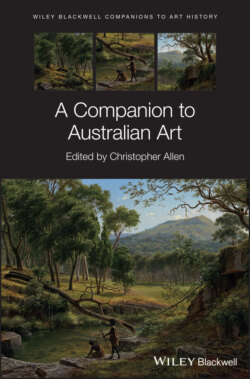Читать книгу A Companion to Australian Art - Группа авторов - Страница 15
IV – Artforms and Themes
ОглавлениеThis final section covers a further three important subjects that require separate discussion. The first of these is the history of Australian sculpture. Michael Hill introduces this complex subject, which weaves in and out of the story of art in Australia in the course of the last two centuries, but is hard to account for in narratives that are mainly focused on painting. Early sculpture is principally concerned with monuments and portraits, and both the choice of individuals or events who are thus commemorated and the manner of commemoration within a newly-founded community are clearly of great significance. In the modernist period, on the other hand, the meaning and place of public monuments become increasingly vague and disconnected from a sense of social purpose.
Photography too has a long history in Australia – almost as long as anywhere else, since by the mid nineteenth century the arrival of new technology in Australia was almost simultaneous with its invention in Britain, Europe or America. Indeed photography had a particular connection with the far-flung regions of Empire, both because it allowed images of new and exotic worlds to be reproduced for the benefit of audiences in the metropolises of the old world, and also because portrait photography was particularly important to families separated indefinitely by distant expatriation. Isobel Crombie offers an expert introduction to a field that extends from early daguerreotypes to contemporary artists of international stature such as Bill Henson.
Philip Jones, finally, deals with a subject which, though not the central focus of this book, is of the greatest importance: Aboriginal art in the modern world, and more specifically the way that traditional Aboriginal art has adapted and changed over the last half-century or so. Different materials have been adopted, the traditional roles of men and women in the making of art have been disrupted, and most importantly both the social occasion and the intended audience of art have been radically transformed in a new environment dominated by the demands of the domestic and international art markets.
